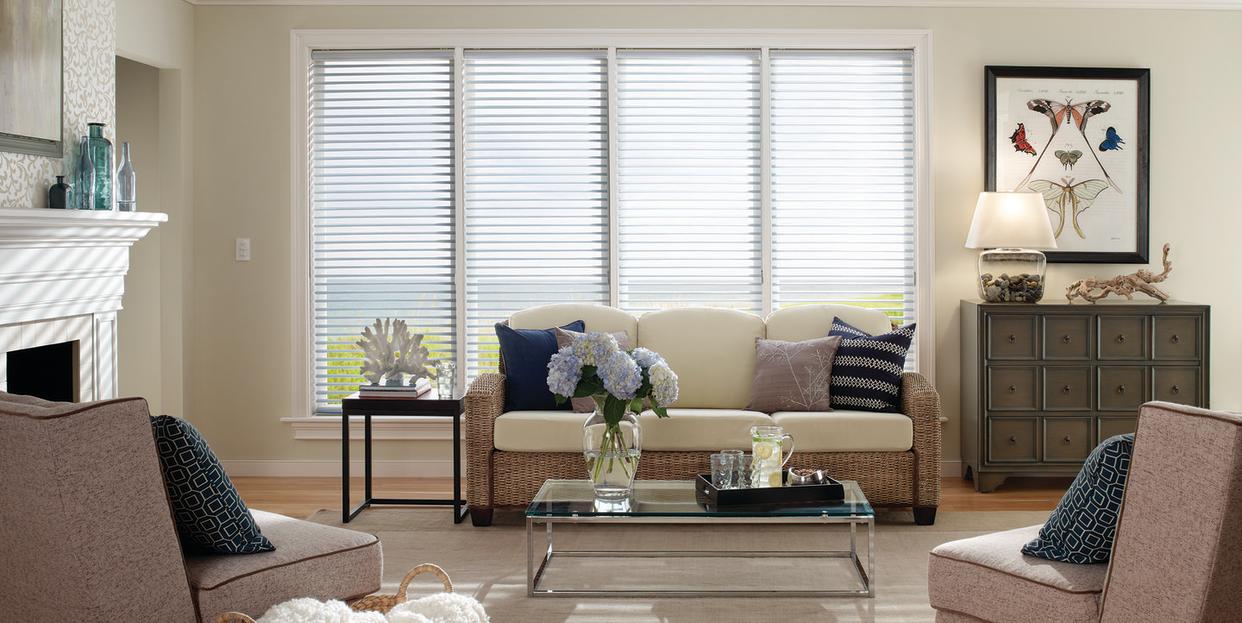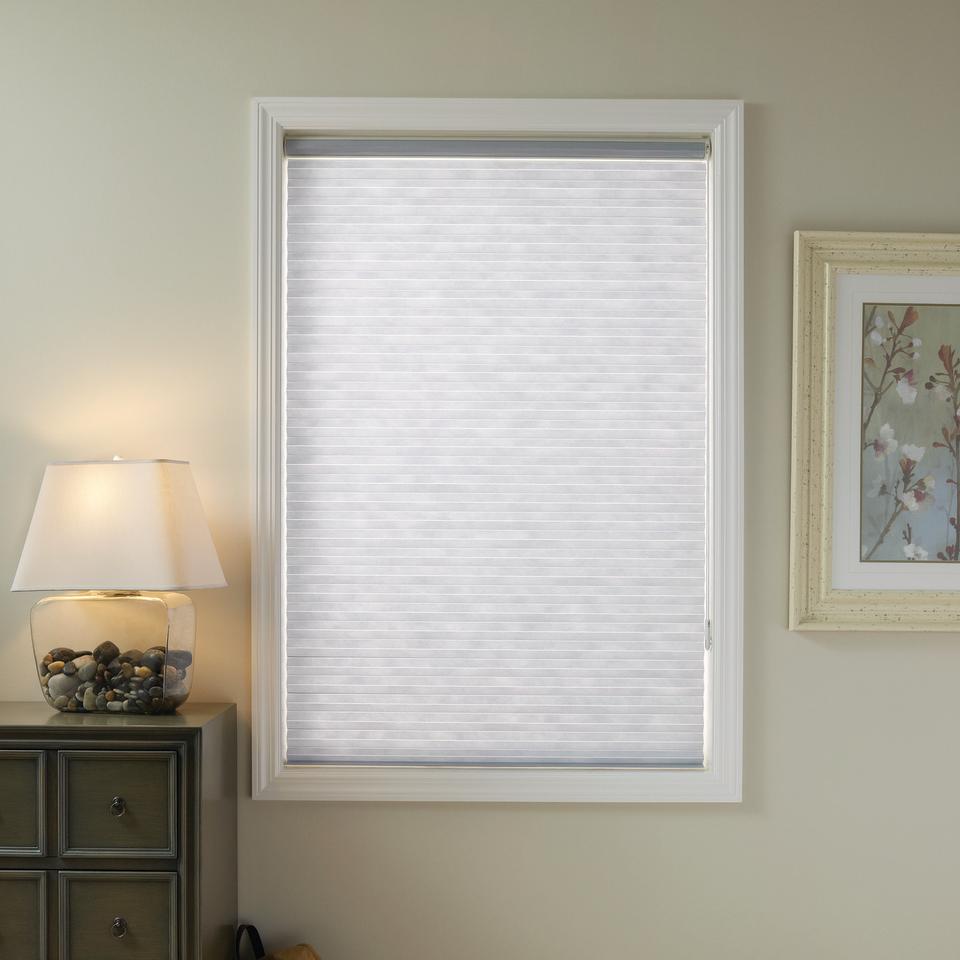How to Buy Blinds and Shades

With so many styles of blinds and shades to choose from, finding the right one for your needs isn't always a quick open-and-shut deal. Here, we've gathered our best advice to help you see your way through the process.
Whether you're looking for privacy, style, or both, it can be a daunting task to choose window treatments. Should you head to a specialty blind store, your local home center, or shop online? How formal should you go, or how sheer? And how come your stylish neighbors always seem to get it right?
"Windows are a great focal point in a room and blinds and shades should be both decorative and functional. Thankfully, we've come a long way from the days of hiding them behind basic mini blinds. Now you can dress up a room in hundreds of ways without making a major investment," says Carolyn Forté, Home Appliances & Textiles Director in the Good Housekeeping Institute.
At Good Housekeeping, we saw a need for better, well-priced window treatments that are more safety-conscious — and then decided to roll them out in a wide swath of colors, fabrics, and styles. Backed by our GH Seal, Good Housekeeping Blinds and Shades are stylish and well-priced — and they put safety first, offering many cordless options. Some adjust with one touch via a motorized wand; others are insulating, which helps you save on heating and cooling.
Here's what to consider before you buy to keep from getting blindsided:
What's the difference between blinds and shades?
The main difference is in the material: Blinds are usually made from wood, metal, or a composite, so they have a harder look; shades are fabric-based, giving rooms a softer feel.
Things to consider when buying blinds and shades
Light and privacy: Decide whether you want your room bright and airy or more "buttoned up" and cozy. Blinds tilt to let the sun in or keep it out; when they're closed, you lose light. Shades have fabric options that are room-darkening or light-filtering, giving you more control over brightness. But unless you opt for the most sheer, they have to be pulled up to let light in or down to deter nosy neighbors.
Your budget: Are you outfitting just one window or the entire house? You may consider spending more on certain windows and scaling back on others. Window treatments are priced by size, so expect larger treatments to cost more. Custom sizes and specialty fabrics, patterns, and features also add to the cost.
Safety: If you have kids, opt for cordless styles, since accidental strangulation is a top concern.
Cleaning: Blinds don't need professional cleaning, but they can be dust magnets. To make dusting them easier, use Swiffer's 360° Duster (it's a Seal holder). Shades in textured fabrics and weaves hide soil better, but cleaning shades is trickier — you can lightly vacuum and spot-clean, but bigger messes are best left to the pros.
Your decorating style: Is it formal or casual, comfortable or chic? Bold colors can be fun or dramatic. Subtle hues are perfect for a room decorated in neutral, earthy colors. Do you prefer corded styles or sleeker, streamlined cordless ones?

Types of Blinds
Blinds are best if you want tiltable slats that can be adjusted to let the sun shine in (or not). They offer a handsome, clean-looking custom fit and plenty of privacy. Prices for blinds generally climb in this order: vinyl, aluminum, faux wood (or textured vinyl), and wood.
You don't have to put blinds at half-mast to let in light, as you do the with shades — the full length of the window pane can always be covered for a finished look, even when slats are open. Handy for bathrooms and bedrooms because you can leave blinds down for privacy but adjust as needed for light. The downside is that blinds generally require more of a commitment to keep clean, because the slats attract dust and grime.
Here's what to know about some types of blinds:
Wood blinds come in light and dark hues and polished or painted finishes — our GH line ranges from white Country Cottage to rich Peruvian Walnut — and they're perfect for offices and dens. They're not the best choice for kitchens or baths, where moisture could do damage (choose polymer or faux wood instead), or for bedrooms or living rooms where you want a softer, more romantic effect.
Insulating blinds help conserve energy and filter or block light, so they work hard for your money. Our GH branded selection of insulating blinds come in a variety of colors.
When choosing blinds, keep in mind that wider horizontal slats create the illusion of bigger windows and more space in apartments and small rooms. Slats in the GH line range from 1 inch to 2 3/8 inches.Vertical blinds work for windows that are wider than they are tall. They're an ideal pick for picture windows with a sweeping view or across sliding glass doors.
Types of Shades
Shades are the answer if you're looking for tremendous versatility and style. They provide more ways to create different looks and moods using texture, pattern, and fabric weight. Shades are a versatile way to easily refresh any room and can lend a warmer, softer look than blinds. The downside is that to keep them fresh and clean, you'll need to hand-wash vinyl shades. Fabric shades (especially if they're a light color) should be vacuumed with a hand tool regularly and either spot-cleaned or sent out for professional cleaning.
Here's what to know about some types of shades:
Woven wood (such as bamboo) offers full, natural-looking coverage. It works well in garden rooms and breakfast nooks, where you often need to filter out the sun to read the newspaper or see your iPad screen.
Tight weaves like twill or microsuede offer optimal privacy because they're opaque. These work well in bedrooms and bathrooms — and don't forget the guest room.
Roman shades have soft, wide pleats that fold flat when raised by a cord. These are lovely for the dining room, living room and family room. Balloon, where the fabric is gathered into billowy poufs — make a high-style statement and are a dressy touch for formal living rooms or sitting rooms.
Honeycomb, a.k.a. cell or cellular, are designed with horizontal rows of air pockets (like the tight, neat rows in a bee's honeycomb) which work to keep heat in during winter and out during the summer. These energy savers are a favorite for all around the house.
Blackout, with a room-darkening fabric, block out up to 100% of light (they cost more than conventional styles) are ideal for bedrooms, home theaters, and media rooms.
Solar are made from a sheer weave that offers protection from harmful UV rays but don't completely block your view. They are a good option for sunrooms, kids' rooms, dining areas, and light-drenched offices.
Our Good Housekeeping line includes everything from sheer horizontal to energy-saving cellular to blackout roller shades and more, in either traditional bottom up or with top down designs for more light-entering options.

Blinds and Shades Safety
"There's an important push to get manufacturers to make blinds and shades safer, since the cords are hazardous for small children," says Carolyn Forté of the Good Housekeeping Research Institute. First line of defense: Don't use corded window treatments or leave cords dangling within reach of curious little hands.
Good Housekeeping's line of blinds and shades was carefully designed with an eye on child safety. "We've included cordless options, and special safety mechanisms for continuous loop and traditional pull-cord styles," says Forté. "These products also carry our Good Housekeeping Seal." GH engineers and textiles experts reviewed the line, and if any style becomes defective within two years of purchase, the product will be repaired or replaced, or your purchase price will be refunded.

How to Measure Blinds and Shades
Knowing the sizes of the windows you want to cover will help you choose more wisely. "You should measure exactly where you want the blind or shade to be," says Forté. So if an inside-mount blind will stop at the frame, so should your measuring tape. For outside-mounted styles, include the window frame in your measurements. When ordering online, consider calling the site's customer service representative to confirm that you have measured correctly. We also like this helpful how-to-measure guide.
More Window Helpers
Stink stopper: Spritz Febreze Fabric Refresher on fabric shades (since you can't easily throw them in the wash) to trap and destroy odor molecules instead of just covering pesky smells. In our tests, it zapped everything from smoke to cooking odors.
Pretty curtains: Layer JCP Liz Claiborne Kathryn Grommet Panels over blinds or use them alone. They're machine-washable, so there's no need for costly professional cleaning. Our Lab found virtually no shrinkage after five wash cycles.
You Might Also Like

